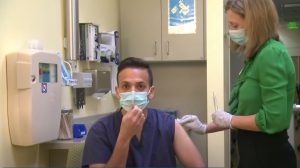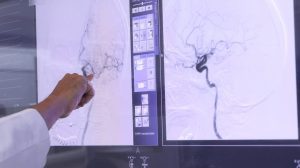NEW YORK (Reuters Health) – Biomarkers of endothelial dysfunction are elevated in premenopausal women with migraine, which may help to explain the link between migraine and strokes, according to a paper in the September issue of Stroke.
A second paper, published August 25 in Neurology, suggests another marker of vascular risk in migraine patients: frequency of migraines.
The authors of the first paper, led by Dr. Gretchen E. Tietjan at the University of Toledo in Ohio, write, “The mechanisms to account for the migraine-stroke association have been elusive, as traditional cardiovascular risk factors are often absent.”
Noting that endothelial dysfunction has been called “the ultimate risk of the risk factors,” they go on to describe a study of premenopausal migraineurs in which they measured plasma and urinary biomarkers related to endothelial activation, including von Willebrand factor and prothrombin fragment as markers of coagulation, tissue-type plasminogen activator antigen as a marker of fibrosis, high-sensitivity C-reactive protein as a reflection of inflammation, and homocysteine, total nitrate/nitrite concentration, and thiobarbituric acid-reactive substances as indicators of oxidative stress.
Values corresponding to the highest or lowest quartile, depending on the marker, were used to define abnormal levels.
Results were compared among three groups: 61 women with migraine with aura (MA), 64 with migraine without aura, and 50 controls. All were free of cardiovascular disease.
Adjusted odds ratios for abnormal biomarker levels were significantly higher in both migraine groups and highest in the MA patients, compared to controls, the authors say.
Specifically, odds ratios for abnormal findings were as follows: for von Willebrand factor activity, 6.51 with MA and 4.59 without aura; for high-sensitivity CRP, 7.99 with MA and 2.63 without aura; and for nitrate/nitrite levels, 6.60 with MA and 3.03 without aura.
Dr. Tietjan and her associates conclude that a better understanding of the endothelium’s role in migraine could open multiple avenues for stroke prevention in migraineurs, including “treatments to prevent migraine, repair the vascular endothelium, and inhibit platelet aggregation and inflammation.”
In the Neurology article, Dr. Tobias Kurth, from Hopital de la Pitie-Salpetriere in Paris, and associates report their analysis of migraine frequency and risk for cardiovascular disease (CVD).
They studied 3568 participants in the Women’s Health Study, ages 45 and older, who had active migraine but were free of CVD at baseline. In this group, 75% had migraine less than once a month, 20% had migraine approximately monthly, and 5% had migraines at least once a week. Also included were 1515 participants with a history of migraine, and 22,715 subjects who never had migraine.
Overall, during a mean follow-up of 11.9 years, there were 706 major CVD events, including nonfatal MI, nonfatal ischemic stroke, or death from ischemic CVD.
Only among those with migraine with aura was there a significant association between migraine frequency and CVD. Compared to no migraine history, migraine with aura less than monthly carried adjusted hazard ratios of 1.81 for coronary revascularization, 1.90 for ischemic stroke, and 2.43 for MI.
Migraine with aura at least weekly was associated with an adjusted hazard ratio for ischemic stroke of 4.25.
Thus, the authors maintain, “There is evidence that the mechanisms leading to ischemic stroke or coronary events among migraineurs with aura differ.”
In a Neurology editorial, Dr. Hans-Christoph Diener, from the University Duisburg-Essen, Germany, and Dr. Christopher A. Beck, from the University of Rochester Medical Center in New York, caution about the low number of events in the study, particularly among women with migraine with aura.
They point out that in absolute numbers, over nearly 12 years there were 567 major CVD events in 22,715 controls (2.5%) and 6 in the 180 women with frequent migraine (3.3%).
“This clearly shows that the absolute risk is considerably low” and “illustrates how relative risks of rare events can be large even if the difference in absolute risks is small,” they said.
The editorialists advise against the use of aspirin for migraineurs, considering the low benefit and that “these data do not provide direct evidence that treating or preventing migraine (i.e., reducing the frequency) will affect risk of CVD.”
References:
Stroke 2009;40:2977-2982.
Neurology 2009;73:576-577,581-588.




